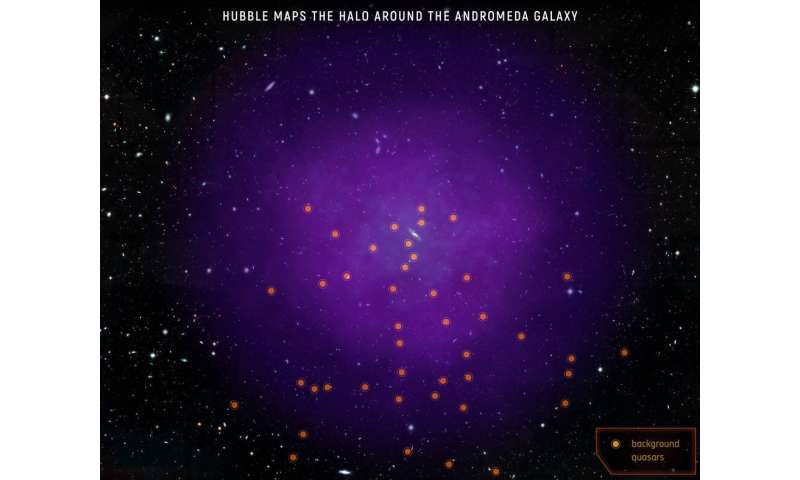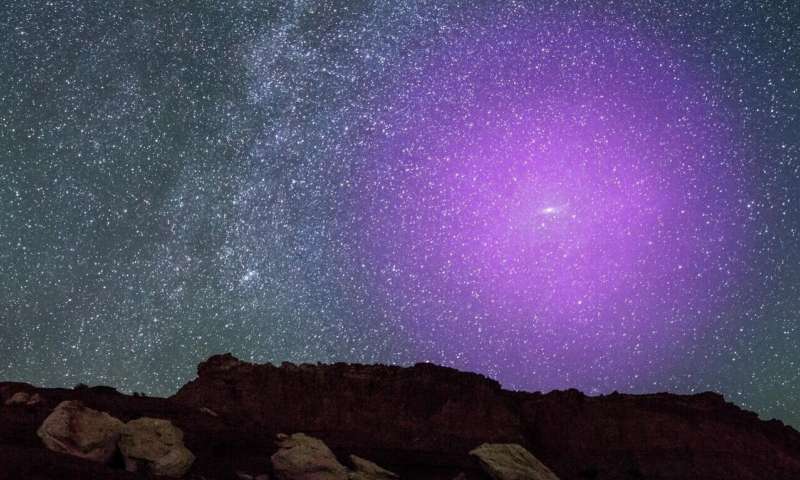In a landmark study, scientists using NASA's Hubble Space Telescope have mapped the immense envelope of gas, called a halo, surrounding the Andromeda galaxy, our nearest large galactic neighbor.
Scientists were surprised to find that this tenuous, nearly invisible halo of diffuse plasma extends 1.3 million light-years from the galaxy—about halfway to our Milky Way—and as far as 2 million light-years in some directions. This means that Andromeda's halo is already bumping into the halo of our own galaxy.
They also found that the halo has a layered structure, with two main nested and distinct shells of gas. This is the most comprehensive study of a halo surrounding a galaxy.
Continued...
Source
Scientists were surprised to find that this tenuous, nearly invisible halo of diffuse plasma extends 1.3 million light-years from the galaxy—about halfway to our Milky Way—and as far as 2 million light-years in some directions. This means that Andromeda's halo is already bumping into the halo of our own galaxy.
They also found that the halo has a layered structure, with two main nested and distinct shells of gas. This is the most comprehensive study of a halo surrounding a galaxy.
Continued...
Source























